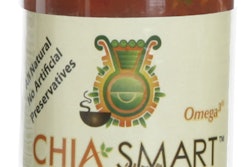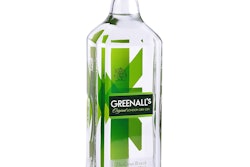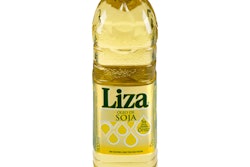Why is gluten like bisphenol A (“BPA”)? You can skip to the end for the answer, but if you read the whole column, you’ll have a richer experience. I hope. Just sayin’.
Gluten refers to proteins in wheat, rye, and barley, or hybrids of them. The Food and Drug Administration says about 1% of the population (3 million or so people) suffers from celiac disease, a painful and debilitating condition that is what FDA calls an “abnormal immune response to the consumption of gluten.” It can cause damage to the small intestine, diminish your ability to absorb food nutrients, and puts you at higher risk of more serious health conditions, including growth problems and intestinal cancers, says FDA. There is currently no cure.
On top of that, though, there might also be a reported 40 million other folks who don’t have celiac but do have some gluten intolerance.
Just as with the major allergens—crustaceans, eggs, fish, milk, peanuts, soy, tree nuts, and wheat—the good advice is simply to avoid the substances in order to avoid triggering the reaction. That’s one good reason for food companies to put careful emphasis on packaging controls and label accuracy.
So it’s important that those with celiac disease and gluten intolerance avoid gluten. But it’s not necessarily important that anyone else avoid glutens.
Nevertheless, “gluten-free” seems to be the latest in a line of label claims that attract consumers seeking more healthful foods, like “organic,” even if the facts don’t always point that way. Consumers may perceive foods without gluten to be attractive as just generally good-for-you, or perhaps consumers concerned about major allergens (and remember, gluten is not one of them) think gluten-free foods are somehow better protected against allergen content.
In short, “gluten-free” is an “f word.” “Fad.”
Food companies are responding, adding label claims about lack of gluten content and redesigning products. And FDA has picked up on the fact that people might be getting ahead of themselves. In a document for consumers, FDA notes that those without a medical need to avoid gluten are only needlessly restricting their diets, and reminds even those who have to avoid gluten that “Gluten-free is not synonymous with low fat, low sugar, or low sodium.”
To help those who need to avoid gluten do so, Congress ordered FDA to work up definitions for label claims about gluten such as “gluten-free” as part of the same law that provided for labeling of foods about the presence of major allergens. FDA proposed a set of rules back in 2007, and never finalized them, but then in August re-opened public comments on the proposal.
One inspiration for the re-opening was the appearance of a report from the agency that assessed the health hazard from gluten exposure to those with celiac disease. FDA altered the health assessment a bit based on this peer-reviewed report and wants public comments on it as well as on the definition of “gluten-free.”
FDA’s proposed definition of the label claim “gluten-free” is that it means the food doesn’t contain:
• Any wheat, rye, or barley ingredient or ingredient that’s a crossbreed of them;
• An ingredient derived from any of those grains that wasn’t processed to take out the gluten, and if it was, if it still contains 20 parts per million or more of gluten; or
• 20 ppm or more of gluten.
FDA says it likes its proposed definition, which it hasn’t changed since 2007, because 20 ppm is the level at which analytical methods can “reliably and consistently” detect gluten.
More details are in the August 3 Federal Register, and comments are due by October 3.
Here FDA is working so hard to set up its rules based on the science, and meanwhile big swaths of the public are off and running on a gluten-free tear, seeking to avoid gluten when there is no medical need to do so.
So why is gluten like BPA? Because both substances are victims of perception, not science.
Industry and government representatives can often be heard to say that their decisions are guided by science. But perception, reputation, feelings in the marketplace—these are the trump cards.
We may prefer it if science guides decisions, but it often doesn’t. So companies start to phase out the package component BPA, though the science tells us it’s safe at current levels. And for years to come, too many consumers may tie themselves in knots to avoid gluten to improve their health, when there isn’t any clear health benefit for doing so.
Packagers should always strive to be guided by facts and science, which is after all what the law requires of them in a variety of ways. Just remember, yours might not be the final word.
Gluten refers to proteins in wheat, rye, and barley, or hybrids of them. The Food and Drug Administration says about 1% of the population (3 million or so people) suffers from celiac disease, a painful and debilitating condition that is what FDA calls an “abnormal immune response to the consumption of gluten.” It can cause damage to the small intestine, diminish your ability to absorb food nutrients, and puts you at higher risk of more serious health conditions, including growth problems and intestinal cancers, says FDA. There is currently no cure.
On top of that, though, there might also be a reported 40 million other folks who don’t have celiac but do have some gluten intolerance.
Just as with the major allergens—crustaceans, eggs, fish, milk, peanuts, soy, tree nuts, and wheat—the good advice is simply to avoid the substances in order to avoid triggering the reaction. That’s one good reason for food companies to put careful emphasis on packaging controls and label accuracy.
So it’s important that those with celiac disease and gluten intolerance avoid gluten. But it’s not necessarily important that anyone else avoid glutens.
Nevertheless, “gluten-free” seems to be the latest in a line of label claims that attract consumers seeking more healthful foods, like “organic,” even if the facts don’t always point that way. Consumers may perceive foods without gluten to be attractive as just generally good-for-you, or perhaps consumers concerned about major allergens (and remember, gluten is not one of them) think gluten-free foods are somehow better protected against allergen content.
In short, “gluten-free” is an “f word.” “Fad.”
Food companies are responding, adding label claims about lack of gluten content and redesigning products. And FDA has picked up on the fact that people might be getting ahead of themselves. In a document for consumers, FDA notes that those without a medical need to avoid gluten are only needlessly restricting their diets, and reminds even those who have to avoid gluten that “Gluten-free is not synonymous with low fat, low sugar, or low sodium.”
To help those who need to avoid gluten do so, Congress ordered FDA to work up definitions for label claims about gluten such as “gluten-free” as part of the same law that provided for labeling of foods about the presence of major allergens. FDA proposed a set of rules back in 2007, and never finalized them, but then in August re-opened public comments on the proposal.
One inspiration for the re-opening was the appearance of a report from the agency that assessed the health hazard from gluten exposure to those with celiac disease. FDA altered the health assessment a bit based on this peer-reviewed report and wants public comments on it as well as on the definition of “gluten-free.”
FDA’s proposed definition of the label claim “gluten-free” is that it means the food doesn’t contain:
• Any wheat, rye, or barley ingredient or ingredient that’s a crossbreed of them;
• An ingredient derived from any of those grains that wasn’t processed to take out the gluten, and if it was, if it still contains 20 parts per million or more of gluten; or
• 20 ppm or more of gluten.
FDA says it likes its proposed definition, which it hasn’t changed since 2007, because 20 ppm is the level at which analytical methods can “reliably and consistently” detect gluten.
More details are in the August 3 Federal Register, and comments are due by October 3.
Here FDA is working so hard to set up its rules based on the science, and meanwhile big swaths of the public are off and running on a gluten-free tear, seeking to avoid gluten when there is no medical need to do so.
So why is gluten like BPA? Because both substances are victims of perception, not science.
Industry and government representatives can often be heard to say that their decisions are guided by science. But perception, reputation, feelings in the marketplace—these are the trump cards.
We may prefer it if science guides decisions, but it often doesn’t. So companies start to phase out the package component BPA, though the science tells us it’s safe at current levels. And for years to come, too many consumers may tie themselves in knots to avoid gluten to improve their health, when there isn’t any clear health benefit for doing so.
Packagers should always strive to be guided by facts and science, which is after all what the law requires of them in a variety of ways. Just remember, yours might not be the final word.

























